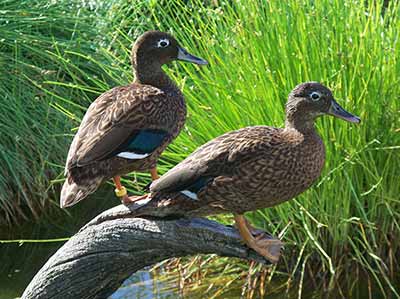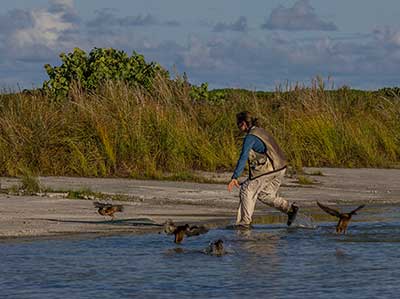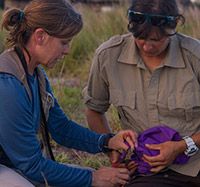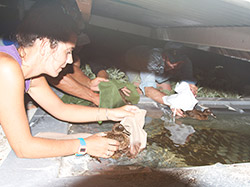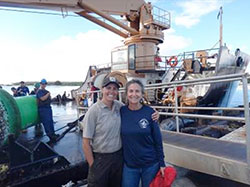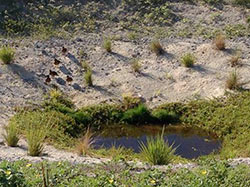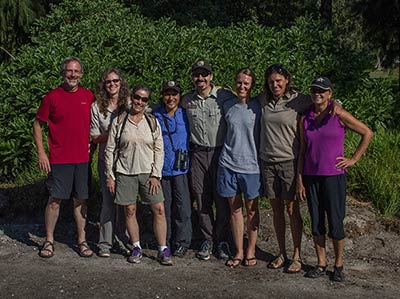Endangered Laysan Ducks Have a New Home
The endangered Laysan duck (Anas laysanesis) has a new home at Kure Atoll Wildlife Sanctuary within Papahānaumokuākea Marine National Monument. In September, a team of wildlife biologists captured 28 of the birds from Midway Atoll National Wildlife Refuge and transported them aboard the U.S. Coast Guard (USCG) Cutter Kukui to their new lodgings.
The team worked throughout three days and nights to select candidate birds based on age class, health and male-to-female sex ratio. The ducks were cared for in aviaries and provided with hydration, nutritional support, health screenings, tasty worms and duck chow to eat, and swimming pools. Biosecurity measures were taken, including a duck foot bath and quarantine of transport boxes and food, to prevent any transfer of invasive species from one island to another.
The endangered Laysan duck is the rarest duck in the Northern hemisphere and has the smallest geographic range of any duck species in the world. It once occurred across the Hawaiian Archipelago but disappeared from the main Hawaiian Islands with the arrival of invasive rats around 800 years ago.
Its disappearance from the Northwestern Hawaiian Islands occurred later, with the very last population isolated on Laysan Island for more than 150 years. At the turn of the twentieth century, humans introduced rabbits to Laysan Island that rapidly devastated the vegetation, leading to the extinction of three endemic land birds (Laysan rail, Laysan Honeycreeper and Laysan Millerbird).
The Laysan duck population was recorded at 11 birds in 1911; their numbers climbed quickly after the rabbits were eradicated from Laysan in 1923. In 2004 and 2005, ducks were successfully translocated from Laysan Island to Midway Atoll to increase the species’ chance of survival. Those two populations were approaching 1,000 total birds until the 2011 Tōhoku Tsunami hit their island homes, causing a 40 percent decrease in the population. Establishing additional populations of the species will reduce its risk of extinction from random disasters, introduced species or disease outbreaks.
Kure Atoll is located about 1,350 miles northwest of Honolulu. The 90-hectare atoll was chosen as a reintroduction site because mammalian predators (rats) were eliminated starting in 1993, and the site has been undergoing habitat rehabilitation since 2007. Cynthia Vanderlip and her team from Hawaii’s DLNR Division of Forestry and Wildlife on Kure Atoll have been working diligently to prepare the atoll for the arrival of the ducks and will report sightings of the translocated birds.
This landmark event marks the 10th Anniversary of the Laysan duck project in 2004, when the first of these island waterfowl were translocated from Laysan Island to Midway Atoll.
Biologists from the Hawaiʻi Department of Land and Natural Resources (DLNR), U.S. Fish and Wildlife Service (USFWS), U.S. Geological Survey (USGS) and the Hawaiʻi Wildlife Center led this initiative, with assistance from the U.S. Coast Guard (USCG).
Read the Press Release.
See more pictures and video:
https://www.flickr.com/photos/usfwspacific/sets/72157647398966195/
http://www.dvidshub.net/video/359925/endangered-duck-release.
Laysan Duck Project Additional Partners
 |
 |
 |
